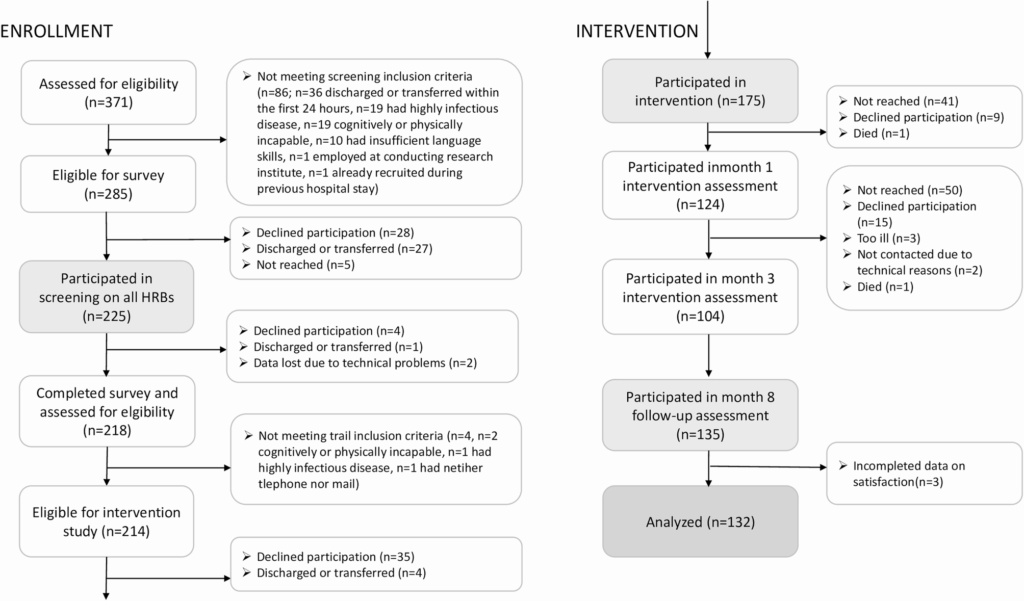
In an effort to combat the rising tide of non-communicable diseases linked to health risk behaviors (HRBs), a recent study has highlighted the effectiveness and patient satisfaction with proactive, automatized multiple health behavior change interventions. Conducted at the University Medicine Hospital Greifswald in Germany, the study found that a significant majority of hospital patients expressed approval and satisfaction with these interventions aimed at reducing tobacco use, alcohol consumption, unhealthy diets, and physical inactivity.
According to the study, which took place between May and July 2022, 82% of the patients approached agreed to participate in the intervention, and more than 90% approved of the systematic screening and intervention process. This high level of acceptance underscores the potential for such interventions to make a substantial impact on public health by addressing multiple HRBs simultaneously or sequentially.
Understanding Health Risk Behaviors
The significance of addressing multiple HRBs cannot be overstated. In Germany, as in many other countries, at least half of the adult population reports engaging in two or more HRBs. The co-occurrence of these behaviors significantly increases mortality risk, making effective interventions crucial.
Multiple health behavior change interventions are designed to tackle two or more HRBs within a limited timeframe. Previous studies have shown positive outcomes, particularly among primary care patients aged 45 to 75, who were more likely to change their behaviors, such as reducing smoking or increasing physical activity, when targeted by such interventions.
Patient Satisfaction and Intervention Design
Recent findings from the Proactive Automatized Lifestyle intervention (PAL) study revealed that patients were generally satisfied with both the process and outcomes of the intervention. The intervention involved computer-generated feedback letters tailored to each patient’s specific HRBs, delivered at various intervals over several months.
“80.5% of follow-up participants graded the intervention as good or very good,” the study reported, with a mean overall satisfaction score of 2.9 out of 4.
Patient satisfaction was measured using a multi-dimensional approach, assessing both process attributes (such as the suitability and utility of the intervention) and outcome attributes (such as improvement in health problems and daily functions). This comprehensive assessment revealed high satisfaction levels, particularly with the intervention’s format and dose.
Implications for Public Health
The PAL study’s findings have significant implications for public health strategies, particularly in reducing social inequalities in health services. The study noted that patients with lower levels of school education reported greater satisfaction with the intervention, highlighting the potential for such programs to reach and benefit populations that are often harder to engage.
This aspect of the study is particularly promising, as it suggests that proactive, computer-based interventions can be effective across diverse patient demographics, including those most in need of support. The study’s authors emphasize the importance of designing interventions that are inclusive and accessible, potentially offering materials in multiple languages to further enhance reach and impact.
Challenges and Future Directions
Despite the positive findings, the study also identified areas for improvement. Some participants expressed a desire for adjustments in the amount and frequency of feedback, suggesting a preference for more concise interventions. Additionally, while the majority of participants reported no discomfort from the intervention, a small number noted emotional reactions, indicating the need for psychological support options as part of future implementations.
Overall, the study underscores the importance of patient-centered approaches in health behavior change interventions. By tailoring interventions to individual needs and preferences, healthcare providers can enhance patient engagement and satisfaction, ultimately leading to better health outcomes.
As healthcare systems continue to grapple with the burden of non-communicable diseases, the findings from the PAL study offer valuable insights into the design and delivery of effective, patient-friendly interventions. By leveraging technology and proactive engagement strategies, hospitals can play a pivotal role in promoting healthier behaviors and improving public health on a broad scale.







